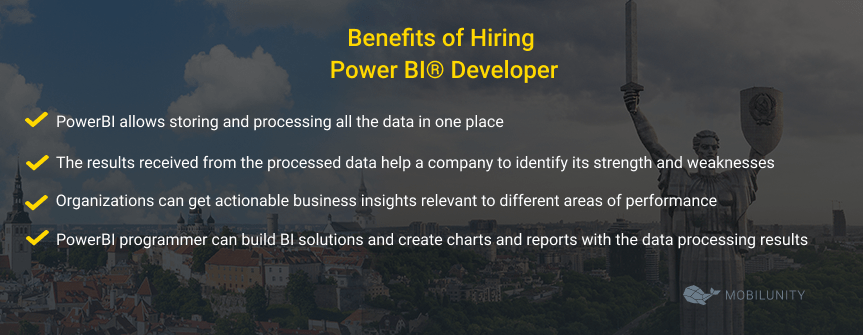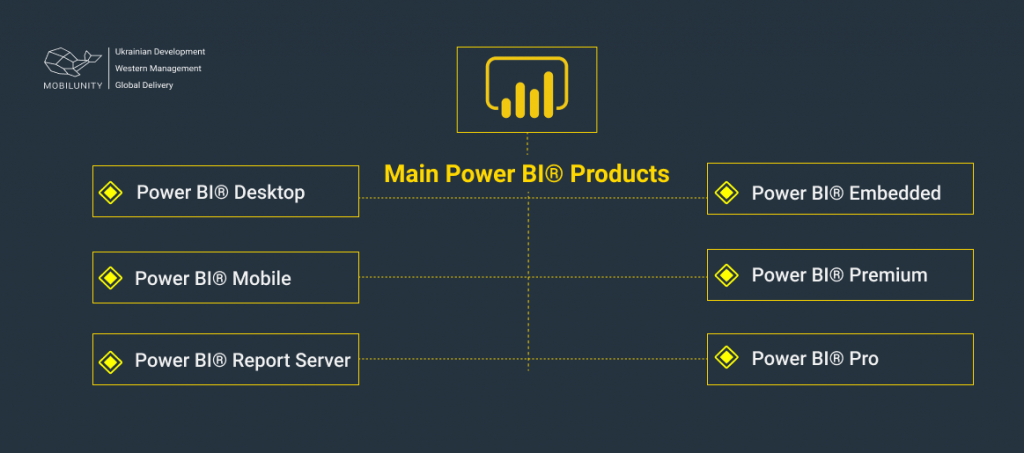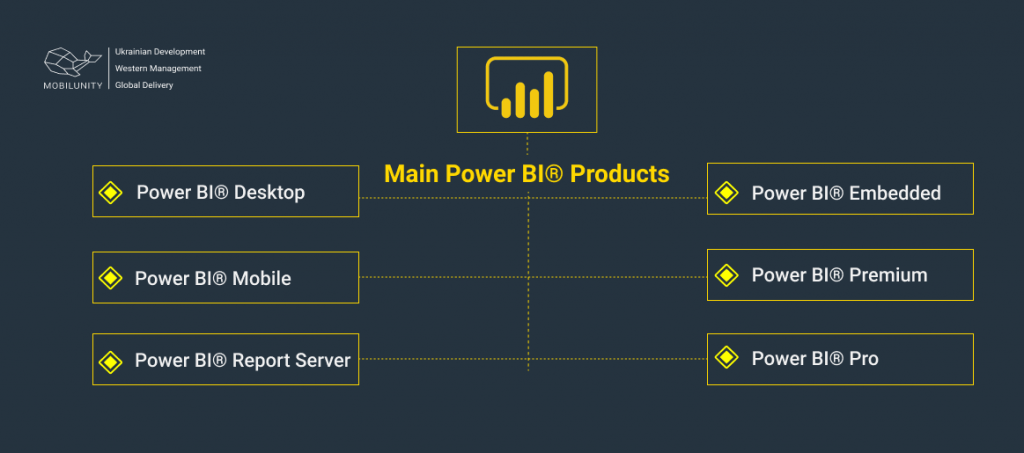Gartner, consulting and research agency in the area of informational technologies, has acknowledged Microsoft Power BI as a leader among business and analytics intelligence services. It keeps on running like that for several years in a row, proving that businesses trust Power BI for its potential to visualize and connect any data due to being an AI-powered and scalable platform.
Software research and development make it possible to implement Power BI for much smarter energy consumption. This results in removing various issues from the energy realm when it comes to accessing data. With the insights provided this Microsoft unified platform aims at reducing harmful environmental impact while still providing an opportunity to achieve accurate analytics across the complete value chain. The processes lead to an increase in renewable energy. Let’s explore the depth of the concept.
Source: Mobilunity
The Demand for Energy in the Modern World
“Everything is energy and that is all there is to it,” as Mr. Einstein once said. It is indeed true. It won’t take much of an effort to notice that everything does run on energy and demand for it is growing fast and exponentially pro-rata to the development of the world.
For so many years humanity has learned how energy behaves, how to handle it, converting it into various forms, and how to preserve it. Yet there is still a critical need to get a better understanding of how to get control over it entirely and prevent exhaustion of the resource.
Present-day software engineering research focuses on expanding the analytical capabilities of the acquired data volumes that contribute to finding solutions for energy efficiency. Many companies are investing in advanced energy software development to harness these insights and build intelligent tools for monitoring, optimizing, and managing energy consumption across operations.
The demand for energy and its consumption is immense. Therefore, when it comes to talking about the amount of energy needed to satisfy modern needs, especially in the technology area, environmental sustainability should be taken into consideration. Sustainable research software programs will help to renovate the balance via developing and implementing software for low-energy usage approaches.
Energy Efficiency as one of the Main Goals
Energy efficiency comes as a top priority for the world to keep on existing. The idea is to employ less energy yet to deliver the same expected outcomes. Here comes the urge for creating energy-conserving homes ( and buildings in general) to use less energy resources. Also, industries go energy-friendly to produce goods the way it saves more than it spends.
Applying energy-conserving principles will take care of our environment, preventing harmful irreversible climate situations. On top of that, it guarantees business scaling and competitiveness due to reduced energy costs and the ability to offer novelties that are both practical and environment-friendly.
Software engineering shifts towards green engineering and offers software research and development services in finding ways to equip the world with energy-efficient appliances to manage the business and daily life in general.
There are three vectors that R&D software paves its way to much more sensible energy spending. They are as follows:
- Exploring cloud potential (according to a WSP study moving processes to Microsoft cloud services might reach 98% of carbon efficiency and 93% energy efficiency in comparison with on-premise experience).
- Making everything smarter ( smart cities, smart vehicles, and smart constructions utilize tech possibilities to reduce carbon emissions, energy volumes, water consumption, and waste. This is all possible through implementing an innovative approach to data access and analytics that is backed by AI, cutting-edge robotics, and mapping imagery. Top-notch IoT consulting services are in demand to have a clear outline of a specific infrastructure “smart needs”).
- Adding more “green principles” to software development ( employing all the principles existing for developing sustainable apps demonstrating favorable influence on Earth).
Managing energy consumption is a key focus for tech specialists in order to keep workflows efficient yet to reduce the levels of energy consumed in the process.
Power BI and its Benefits for Energy Sector
Power BI potential has already been a bit touched above. This Microsoft cloud-based business solution consists of apps and services that transform unstructured company data into intelligent and interactive insights. Power BI deals with pretty much any data type assembling (Excel sheets, cloud-based data information, on-premises records, etc.). This way businesses obtain comprehensive access to and view of the information assets that can be easily processed and shared among employees and clients, notwithstanding location or resource placement.
Source: Mobilunity
Integrating Power BI, an analytics and visualization tool that is, one of the smart ways to achieve much-pursued energy efficiency through extracting advanced insights from massive datasets. By offering an energy-conserving dashboard, Power BI, as an intelligent software, contributes to the following:
- Tracking energy consumption
- Identifying risks and alleviating failures
- Assessing energy collecting and outages
- Real-time matters solving
- Previous data evaluation
Based upon that, it is possible to define benefits for the energy sector in the business:
Microsoft Power BI helps to improve the way sustainable energy gets to be managed and generated by implementing data-driven insights.
- Power BI operates with a reference to a much greener perspective (e.g. IoT tracking provides AI analytics alongside actionable insights for making sustainable decisions, while transforming preventive decisions into actionable development of the needed software, equipment, etc.).
- It accelerates the transition to the energy-conserving means of dealing with the business (e.g. with the help of proactive analytics it is possible to develop and maintain a smart grid that contributes to the enhanced volume of conserved energy).
- Power BI helps to modify a usual workforce adding to the group a sustainable energy operator and service provider (e.g. employees can easily collect and share insights via visualization, live reports, and dashboards).
- Motivates to approach energy as a critical value for conserving in the exponentially developing digitalization (e.g. constant upgrade of research and development software for further identification of the new business models via AI-driven analysis of energy distribution, consumption, and customer needs in real-time).
Microsoft Power BI is developed to satisfy the needs of the industries to own the best energy-conserving tech there is.
Successful Power BI implementation ideas
Understanding the importance of the business intelligence tool which Power BI is. Let’s see what is required for the company to maintain its proper functioning on the level that serves its purpose.
- Real-time data availability ( Power BI gives the structure to any mess, yet it should have an access to the information).
- Decent infrastructure ( where the team of specialists will unfold the Power BI implementation roadmap).
- Data scientists ( data transformation into actionable insights is impossible without a tech talent who owns quite a high level of data maturity assessment).
Being a relatively new tool, Power BI requires special attention to how to successfully integrate and help the company not only to take care of the energy consumed but for the productivity levels to remain on top.

Conclusion
Microsoft Power BI is an essential analytics tool that does an excellent job when it comes to nurturing the energy-renewable processes and saving the highest productive level possible with a perspective of maximization.





